The Fall and Rise of the Xbox One
The Xbox One is the best pure console on the market right now, but it's been a hard road getting to this point.
This article first appeared on USgamer, a partner publication of VG247. Some content, such as this article, has been migrated to VG247 for posterity after USgamer's closure - but it has not been edited or further vetted by the VG247 team.
The best console on the market right this second is the Xbox One X. With its blistering performance and sturdy controller, it's the best place to play third-party games. Microsoft's online features are second to none, offering things like achievement leaderboards, seamless party matchmaking, and name changes. The backward compatibility program is the most advanced we've ever seen. The Xbox One X is almost everything you could want in a games console... but it wasn't always that way.
To understand the Xbox One, we have to go pretty far back. All the way back, in fact, to something called WebTV. Back in 1995, Steve Perlman, the guy responsible for Apple's QuickTime and the now-defunct game streaming service OnLive, had an idea for putting television content on a computer. He eventually took this idea and turned it into something called WebTV, which Microsoft eventually bought and introduced to the Microsoft Network. WebTV eventually shut down, but it was one of Microsoft's many attempts to break into the living room.
Microsoft is fundamentally a software company, which means its goal is to get its software on as much hardware as possible. This is distinctly different from how companies like Sony or Sega worked. They were hardware companies that released software as an attempt to push that hardware. Sony, especially, used its game consoles to push all sorts of technology, like televisions, DVDs, and Blu-Ray devices.

For years, Microsoft dominated the personal computing market, easily outselling operating systems like Apple's OS, AT&T's Unix, or IBM's OS/2. If you wanted a word processor, it had that. If you wanted games, it had that too. The Windows PC was meant to be the all-in-one device that everyone needed. But Microsoft had broader ambitions. It wanted to conquer the entire house.
Years before the iPad, Microsoft worked on a tablet-like device called the Courier. It has partnered up with the Swiss Liebherr company to make smart refrigerators. It even purchased Nokia in order to sell its own smartphones. Microsoft doesn't just want to make operating systems: it wants to be everywhere.
The Original Xbox
In 1998, legendary game developer Seamus Blackley, while working with Microsoft's DirectX graphics group, had an idea: Microsoft should make a game console too. After a few years of hard work and a great deal of money spent, Microsoft released the original Xbox in 2001.
There were teething problems, as there are for any company's first foray into console gaming. The Xbox was going up against industry giants like Nintendo and Sony, which had followed up the PlayStation's monstrous success with the release of the PlayStation 2 a year prior. Sony's console was so successful that it helped force Sega out of the console space entirely.
Microsoft has always been a software company, but it excelled at hardware too. One of the best mice in the world was its intellimouse. Its keyboards were of immensely high quality. Sidewinder joysticks ruled the simulation space, often because they were paired with Microsoft Flight Simulator.
But American consoles hadn't fared well in decades. Consoles like the Atari Jaguar and the 3DO never really took off. Japan's big three-Nintendo, Sega, and Sony-ruled the home console market until Sega's decision to quit making consoles. Japanese developers made the vast majority of console games as well.
Microsoft's entry into the console space wasn't that well received. There were some people who thought an American company had no business getting involved, that an American console couldn't be as good as the Japanese console, much less American games. Microsoft didn't care. It wanted the living room, and was ready to lose billions to gain a foothold.
That's precisely what it did. The Xbox was easily the most influential console of that generation. I realize that sounds like a strange claim; after all, the Playstation 2 defined its generation. But the Xbox defined the next generation.
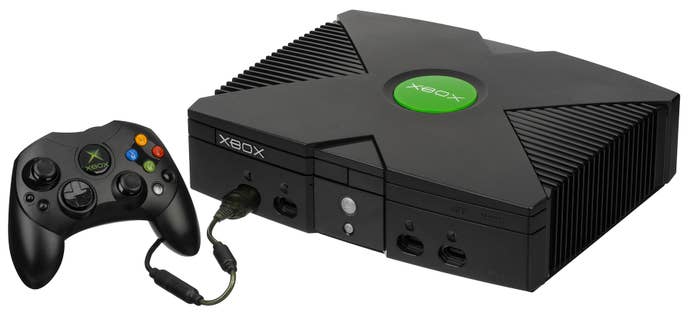
Some Sony exclusives, like Grand Theft Auto 3, were eventually ported to the Xbox. Other series, like SSX and Metal Gear Solid, went from being longtime Sony exclusives to multiplatform series. This was the last generation where third party games felt any significant need be locked to a specific platform; the next generation was all about the third-party multiplatform games.
This wasn't the Xbox's only achievement. Microsoft brought online gaming to consoles. Sure, other consoles had online play, but none of them had really worked to standardize online play. When Microsoft launched Xbox Live in 2002, players had unified accounts and friends lists, matchmaking, and other ideal features. The release of Halo 2 in 2004 solidified the Xbox as the go-to place for online play.
The Xbox was also the first games console to come with a built-in hard drive, allowing customers to buy and play downloadable games. The PlayStation 2 might have been the best-selling console of the generation, but the Xbox gave us a glimpse of the future. It prepared us for what would come next.
Microsoft was ready for the next generation.
The Xbox 360
So much about the seventh generation is about what the Xbox did. Online gaming became the norm thanks to Xbox Live. Indie games exploded thanks to Xbox Live Arcade, a platform for smaller games. Xbox Live introduced online features like achievements and parties for voice chat. Sony did its best to follow up, but the quality of its offerings rarely matched up.
Microsoft brought the games too; the Xbox library had been defined almost entirely by a Dreamcast-like quirkiness, but with the 360, Microsoft went mainstream. It had the best shooters in series like Halo and Gears, the best racing games thanks to the Forza series, unique titles like Alan Wake and Fable, and it convinced many developers to release their games on as many platforms as possible. Previously exclusive series like Final Fantasy and Devil May Cry went multiplatform, which meant developers were making more money than ever before. Still, fans resented Microsoft's perceived intrusion on the console space. Gamers, furious at third-party developers deciding to release their games on multiple consoles, signed petitions urging developers to cut all support for Microsoft.
Microsoft started dipping its toes into online distribution as well; early 360s launched with small 20GB hard drives. By the end of the generation, some Xbox 360s launched with 500GB of space, giving players plenty of room to download entire games, rather than purchasing them on disc.
At the same time, Nintendo, which hadn't performed as well as it would have liked with the Nintendo 64 and GameCube and had fallen behind the explosive popularity of Sony's PlayStation consoles, finally found success with the Nintendo Wii. I remember seeing Wiis in the homes of family members who'd never owned a console before. Motion control seemed like the new hotness. Sony followed suit, as it always did, by following the safe route. The Wii worked, so Sony released a virtually identical device, the Move, and called it a day. Microsoft, always eager to differentiate itself from the competition, went with something called Kinect.
Kinect was different. It would take the simplicity of the Wii and push it one step further: it wouldn't require a controller at all. Instead, you'd stand in front of your TV and play games with a camera. The demo looked cool enough. While the concept wasn't that new-Sony had tried something similar with the Eye Toy-Microsoft went all in on Kinect. And for a while, it looked like Kinect would imitate the Wii's success, and maybe even surpass it. Just months after its release, the Kinect was the fastest selling electronic device of all time.
Microsoft ended the Xbox 360 generation having learned three lessons: people want consoles to do more than just play games, motion gaming is really popular, and the future of gaming is downloadable.
But fans still felt otherwise. The enthusiasm for the Xbox 360 waned over the course of the generation. The quality of Xbox 360 exclusives had diminished-Fable 3 was nowhere near as good as Fable 2, Halo 4's player base dropped off the top of the chart a mere two months after it released, where Halo 3 stayed on top for three whole years. Gears of War: Judgment was nowhere near as beloved as Gears of War 3.
Another problem was Microsoft's move away from a diverse, healthy slate of games and a push towards its big franchises: Halo, Gears, Fable, and Forza. As those series rapidly declined in quality, fans were becoming increasingly frustrated. Couple that with the focus on Kinect's lackluster, often buggy output, and Microsoft fans were in a bad place.
The Xbox One's release would ignore them entirely. It would say "we're the best place to play games," but it wouldn't have anything for them. Microsoft would be too busy pushing more Kinect titles, setting up a TV studio in LA, and trading features gamers were used to for new features with bad messaging.
Introducing The Xbox One
Put yourself in Microsoft's shoes. Your data shows that customers are getting increasingly interested in downloadable games, Kinect is selling like wildfire, and more people are using the 360 for watching streaming video than anything else. What do you do?
You build the Xbox One.
Microsoft started working on a new console. Looking at its data, it knew that people wanted consoles for more than just gaming: people wanted to stream Netflix, watch YouTube, and chat with their friends. Microsoft was also pleased with Kinect's success and was hard at work trying to make Kinect an even better piece of hardware than it already was.
For Microsoft, the Kinect wasn't just a new way to play games that was making buckets of cash, it was a way to do all sorts of non-gaming applications. NASA was using it to control robots. Indie developers could use it for cost-effective motion capture. There were hundreds, if not thousands, of creative Kinect projects, and Microsoft was excited by its vast potential.
Microsoft also watched as people moved to streaming video content. Cord cutters were winning, cable was dying, and streaming video was the future. Like WebTV long before it, Microsoft again wanted in. It wanted to make the Xbox One not just the best place for games, but the best place for television too. Since gamers clearly loved using consoles for Netflix and YouTube, the Xbox would be good at that too. Microsoft even included a secondary HDMI port on the back of the console so you could run your TV box through your Xbox, letting you watch TV and game at the same time.
Sony had a different approach. It had lost to Microsoft the last generation, and was determined to win. It announced the console before Microsoft, in February 2013 with a flashier event than the Xbox One's reveal in May 2013. It started the E3 2013 press conference with the MSTRKRFT remix of Metric's "Monster Hospital," with lyrics that go "I fought the war, I fought the war, but the war won't stop for the love of God..." Sony was here for some good, old fashioned console rivalry. It was hungry. So it announced a bunch of games that were pretty much all terrible, like Knack and Killzone Shadow Fall, and told the world how its console was the most powerful console in the world. It was, in other words, the platonic ideal of a Sony device./p>
Sony knew why people bought consoles: to play video games.
The Xbox One Reveal
On May 21, 2013, Microsoft had a press conference widely remembered as one of the worst in history. Ask most people now what they remember, and they'll tell you it was all TV, no games. That's not entirely true: the reveal spent around 28 minutes talking about the console and what it was, as well as talking about a bunch of TV features. The remaining 30-plus minutes was dedicated to games. Microsoft talked a lot about what made the Xbox a great gaming platform. Rewatching it now, honestly, it's not that controversial a conference. Here's a device that can do all the things you use a console for, but better!
Gamers lost their collective s**t.
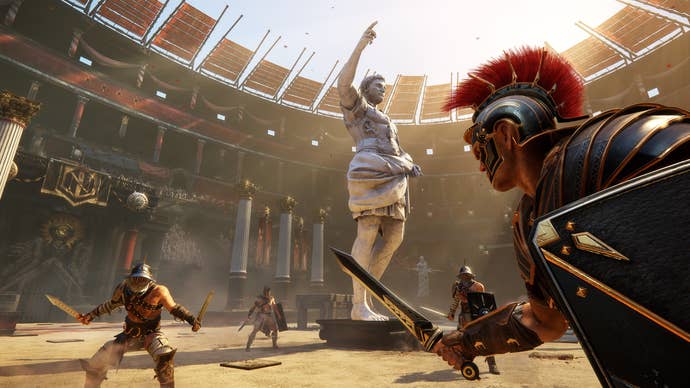
Even though most of us buy games digitally these days, and are happy to do so, gamers zeroed in on the online check-in requirement and used game limitations. Microsoft failed to control the messaging; where it should have been about all the stuff gamers could do, the Xbox One story ended up being about a bunch of awful restrictions.
The E3 conference didn't help. Even though the Xbox conference was 100 percent games and the Sony conference spent a lot of time talking about non-gaming stuff, the story was that Microsoft wasn't making a device for gamers and Sony was. Microsoft was making a device that invaded privacy and banned used games. Sony was making a console that let gamers do what they always did.
At its E3 conference, it revealed that the Xbox One would require Kinect, cost $100 more than the PlayStation 4, and would be a much less powerful device. To any gamer watching, it seemed like there was no reason to stick with the Xbox One at all. Not only that, but it was a huge machine. Players felt disrespected too: when Don Mattrick, head of Xbox at the time, was asked about offline play, he replied "fortunately, we have a product for [that], it's called Xbox 360." When The Wall Street Journal asked him about backward compatibility, he said "if you're backwards compatible, you're really backward."
Microsoft execs looked flustered and tired. None of them seemed happy or excited to talk about the Xbox One. Everyone seemed against Microsoft... including Microsoft.
The Software Company Forgets Software
When the Xbox One actually released, it... well, it wasn't good.
The software was laggy and slow, especially compared to the PS4's snappy UI. Microsoft's games just weren't that exciting; cross-gen games like Call of Duty: Ghosts and Assassin's Creed 4 already looked great on the Xbox 360, and Ryse, despite being a phenomenal-looking exclusive, was a retooled Kinect game that launched with weak action and boring levels. The Xbox One just wasn't bringing the games.
Microsoft was busy pushing features like Xbox Smartglass, which had a digital game guide players could access from a tablet, and it seemed like the games were being ignored entirely.
Microsoft's insistence on a parity clause upset indie developers too. Weaker hardware meant developers couldn't make their games the best on the Xbox. Sony gobbled up the exclusive marketing contracts that had made the Xbox 360 the place to play games last generation. Games like Destiny and Call of Duty got exclusive deals with Sony. On top of that, Sony was advertising new games in series players loved as well as new games that looked gorgeous; it was showcasing all sorts of cool indie games and pushing Japanese games that could be on the Xbox but inexplicably weren't at the time, like Kingdom Hearts, Nier: Automata, and the Yakuza games.
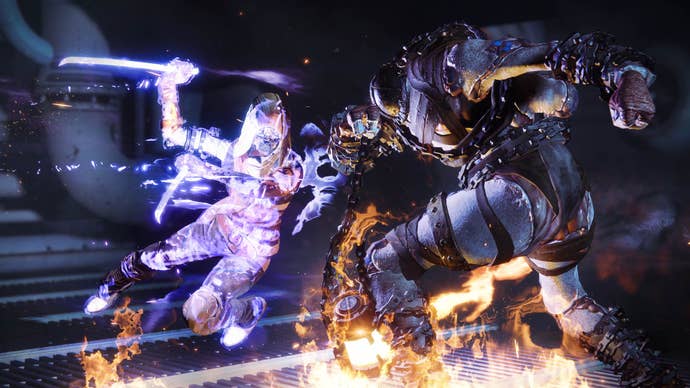
This generation, Microsoft was a letdown when it came to exclusives. Remedy's Quantum Break had a bizarre focus on terrible, soul-sucking television interludes and sloppy combat, and was a far cry from the brilliance of Alan Wake. Halo 5 solved some of Halo 4's problems, but with its repetitive boss fights and dull combat, it couldn't hold a candle to Bungie's best. Games like Zoo Tycoon were unwieldy and strange, while others, like the aforementioned Ryse, were disappointments.
There was also the biggest disappointment of all: The Master Chief Collection, which bundled Bungie's legendary Halo games, with multiplayer functionality, leaderboards, gameplay modifiers, par time and par score challenges, easter eggs, and graphical updates. It was a Halo fan's dream game. But it sucked. I mean really sucked. It basically did not work on launch. I remember trying to connect to friends for hours on multiple occasions, finally giving up in frustration because we could never get in a party of more than three players. Sometimes, we just couldn't see each other. Microsoft added Halo 3: ODST as a free download for everyone who had purchased a copy of the Master Chief Collection originally, but it took four years of patches to get into a semi-workable state, and even now, it's still difficult to party up.
It's not to say that Microsoft hasn't had great games this generation. They have! Sunset Overdrive was incredible! Forza Motorsport and Forza Horizon offered simulation and arcade flavors of racing games, and both of them are the absolute best racing games money has to buy. Gears of War 4 is really solid, utterly gorgeous, and a reminder of why it's the best third-person shooter series in the world, despite a few shortcomings.
But when you compare it to Sony's constant stream of triple-A blockbusters, Microsoft's output feels anemic. High-profile cancellations to games like Scalebound didn't help, even though the game looked rough at showings. Microsoft had a games problem. Things needed to change.
The Rise of Phil
Phil Spencer has been with Microsoft as long as I've been alive. He started as an intern and worked his way up to being one of the top guys at Xbox by the time the Xbox One rolled around. He was one of the people who had to deal with the Xbox One's fallout, and after Don Mattrick's fast exit, Spencer took over the Xbox gaming division.
After Spencer took over, Microsoft started making acquisitions. It secured Fortnite-creator Epic Games' Gears of War series and placed Gears co-creator Rod Fergusson in charge of The Coalition, the new Gears of War development studio. It bought Mojang, the owner of Minecraft, and started publishing Minecraft, which expanded to other platforms as well. Microsoft also reduced the Xbox One's price and removed the Kinect requirement, since after the initial hype, no one was using it anyways.
In 2015, Microsoft introduced a backward compatibility program, ensuring that the free games players got with their Xbox Live subscription would always be available on the new machine. Largely, games play smoother on the Xbox One. Some, like Halo: Reach, were even extensively patched after launch until Microsoft was happy with their performance. In 2017, Microsoft introduced the Xbox Originals backward compatibility program, letting players download original Xbox games, playing them with updates in modern resolutions.
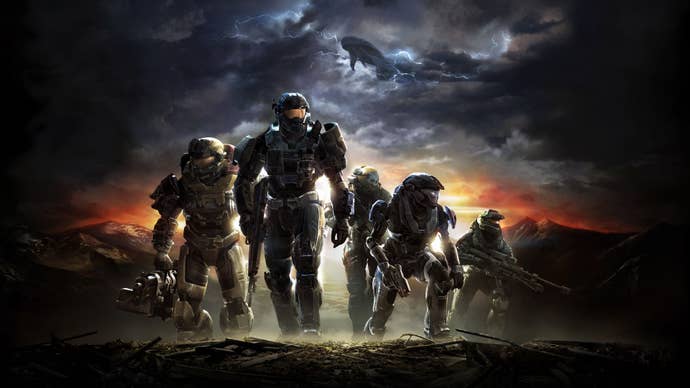
This program has been wonderful. Every few weeks, I boot up my Xbox to find I have some new games in my library, because games I bought on the Xbox 360 are now available on the Xbox One. Compared to Nintendo, which requires you to subscribe to play 30-year-old games, or Sony, where the only selection forces you to rebuy a handful of PS2 games, being able to access hundreds of original Xbox and Xbox 360 games is a godsend. Though it still has a long way to go-notable games like Jet Set Radio Future, the Lost Planet series, and Ninja Gaiden 2 are still missing-it's still a fantastic addition to the Xbox, and the competition simply does not compare.
With the exception of its lack of games, nearly every complaint about the original Xbox One faced has been addressed. In 2017, Microsoft announced the Xbox One X, the most powerful console ever made. It was tired of spending the entire generation listening to customers say that the PS4 was more powerful, so players should buy it instead. The Xbox One X is a monster, and now, for the first time since the 360 generation, the best versions of multiplatform console games are releasing on Microsoft hardware again. Some backward compatible games are receiving Xbox One X enhancements too, with over 215 Xbox One X enhanced games overall.
Xbox Live has received plenty of incremental enhancements as well, like Xbox 360 game achievements counting toward monthly leaderboards, frequent interface and store updates, the ability to stream games from the Xbox to the PC, the Play Anywhere program that lets you buy games on your console and play them on your computer, and even mouse and keyboard support. Right now, the Xbox One X is easily the best place to play console games. Nothing else compares. The games run smooth, look great, and Xbox Live is an fantastic ecosystem. All games are saved to the cloud, so if you rent a game on disc, like it, and buy it digitally, you can pick up right where you left off, something you can't do on the PlayStation.
Microsoft's turnaround has been nothing short of superhuman, but with all the negativity surrounding the last, and without the momentum provided by blockbusters, the Xbox One X, as incredible as it is, isn't going to be winning any console wars.
But Microsoft isn't quite done.
Changing How We Buy Games
Microsoft wants to be everywhere for you. It wants to be your entertainment hub. It wants to be the easiest way to get and play games. When games all cost $60, it's difficult for consumers to pick up lots of games. Microsoft has been determined to find a new pricing model.
Streaming seems like the obvious choice. People don't have to invest in expensive consoles in order to play games, and a regular subscription model is a reliable revenue stream that most businesses prefer to one-off products, but there are significant technical limitations. Bandwidth caps with most American ISPs mean that no one's going to be able to stream hours of 4K games every day without incurring significant fees.
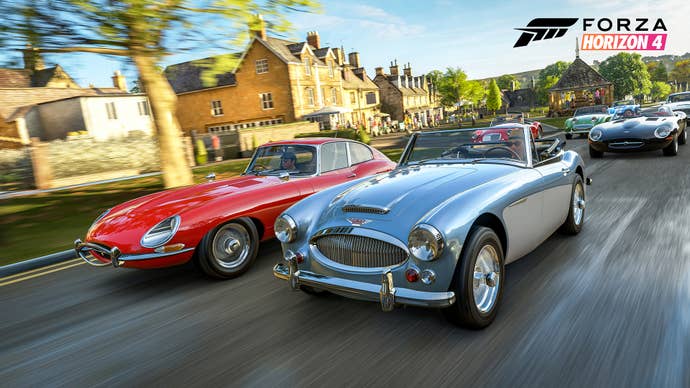
Latency is another big issue; for a game to feel good, you want as little time between the moment you press a button and the moment that input is registered on screen. Professional gamers often game on computer monitors instead of televisions because monitors shave off a few milliseconds. Most televisions have a specific "game mode," for reducing input. Many electronics manufacturers offer expensive routers that help reduce latency even further.
Microsoft just announced Project xCloud, and it claims to have surpassed some of these limits, but we won't really know how it works until the program becomes available some time in 2019. But if that won't work for you, Microsoft has another service you might like: Game Pass. First announced in 2017, Game Pass is a subscription service that has grown to offer over 200 games. For $10 a month, roughly the same price as Netflix, players can download any game on the service and play it as much as they want instead of just buying the game.
Even better, every new Microsoft-published Xbox game and some non-exclusive games release on launch day for all Game Pass subscribers. EA also offers a similar service for Xbox users called EA Access, though new EA games are timed demos instead of full releases.
Put simply, there are so many ways to check out games on the Xbox that it's mind-boggling. There's almost no risk involved. You could buy an Xbox One X, subscribe to Game Pass, and have hundreds of games; not just the latest releases, but original Xbox and 360 games as well. It's groundbreaking.
The Future
Microsoft has been on a buying spree lately, gobbling up studios like Obsidian and Ninja Theory in its bid to release a lot more exclusives. It's exciting to see what these studios come up with, but I'm not entirely confident with Microsoft's direction just yet. For instance, two of Microsoft's biggest releases in recent years, Sea of Thieves and State of Decay 2, were big online games where fans were expected to create their own fun.
With the exception of Playground Games, none of the studios Microsoft has recently acquired have really delivered the triple-A games that Microsoft delivered during the 360 generation. A lot of its games, like Hellblade: Senua's Sacrifice (Ninja Theory) or We Happy Few (Compulsion Games), were smaller budget titles, and some, like Torment: Tides of Numenera (inXile Entertainment), were pretty janky.
Of Microsoft's three big blockbuster studios, Turn 10, 343 Industries and The Coalition, only Turn 10 really fills me with confidence. It has never made a bad game, and when it does make mistakes, it listens to player feedback and improves. I liked Gears of War 4, but The Coalition has played things conservatively; two-player co-op and the class-based multiplayer of Gears 4, coupled with the relatively sedate story has me a bit worried for the series' future. 343 Industries is really struggling to make compelling shooters on par with Bungie's Halo games, and its mishandling of the Halo remakes and Master Chief Collection is frustrating, as a longtime fan of the series.
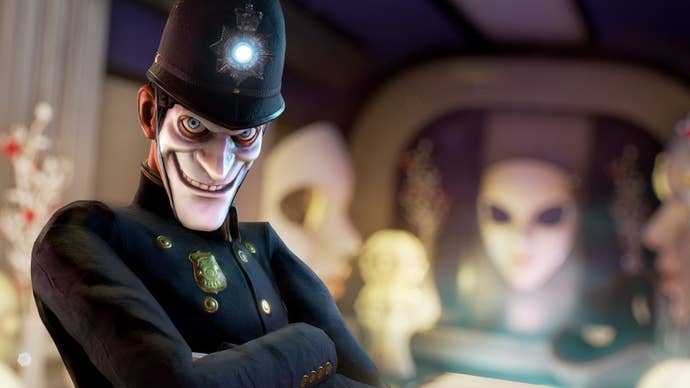
Spencer has promised better PC support, which is good, because right now, despite how great functionality like Play Anywhere can be, dealing with the Microsoft Store itself is a massive nightmare. I know friends who can't play games there at all. The games are great and the Xbox connectivity works like a dream, but the Microsoft Store, the software you use to actually download the games, is the worst software marketplace I have ever used. It's a terrible blight on an otherwise fantastic ecosystem.
I love the Xbox One. I love where it is right now. I love where it's going, even though I have concerns. I barely touch my PS4 and Switch these days because I'm playing all the big console releases on my Xbox One X. I love the way that the Xbox One interfaces with Windows, and I love playing backward compatible games on it.
The Xbox One X is the best place to play games right now, but with so much working against it on launch, and with its perpetual lack of first-party blockbusters, it's unlikely that the Xbox One will ever be recognized as the amazing console it really is, and that's fair. Microsoft ignored its fans for years, and only finally started listening to them years later. The work that the Microsoft team has put into salvaging the Xbox One is nothing short of remarkable, and the Xbox One isn't a complete failure-it's sold admirably and been immensely profitable. In its generation long journey, Microsoft has learned a lot of lessons along the way, but I hope it learned the most important lesson of all: listen to your customers.


